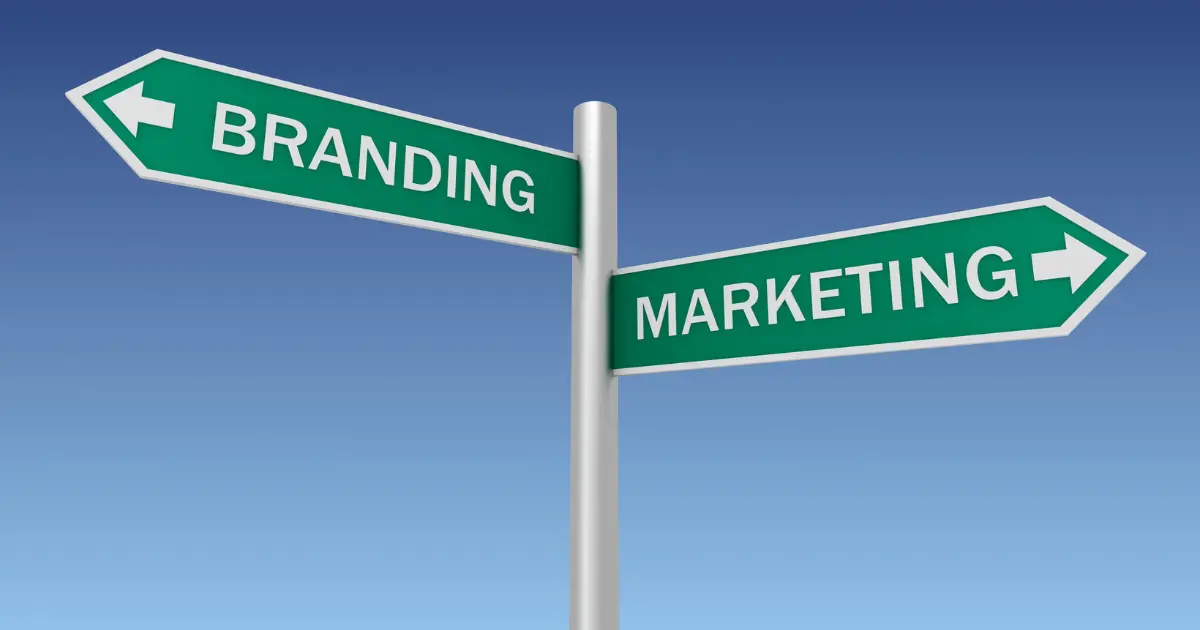Branding vs Marketing: How to Use Both to Skyrocket Your Business Growth

When it comes to growing your business, two words likely dominate your strategy meetings: branding and marketing. They’re often used interchangeably, but in reality, they play very distinct yet complementary roles in building a successful business. Think of branding as the “why” behind your business and marketing as the “how.” Together, these two components create a powerhouse strategy that brings in results.
By understanding the key differences between branding and marketing and learning how to use them effectively, you’ll be equipped to connect with your audience on a deeper level and drive long-term growth.
What’s the Difference Between Branding and Marketing?
Before we discuss how to harness both branding and marketing, it’s crucial to distinguish between the two:
Branding
Branding is the essence of your business. It’s your identity, your voice, and the emotional connection you create with your audience. Simply put, it’s what people think and feel about your company when they see your logo, hear your name, or interact with your product or service.
What does branding include?
- Your Mission and Purpose: Why does your business exist? What values and goals drive it?
- Your Visual Identity: This includes your logo, typography, color palette, and design elements.
- Your Brand Voice: How does your business communicate? Are you playful, formal, empathetic, or authoritative?
- Customer Perception: How do people see and feel about your brand? Trust and loyalty play key roles here.
Successful branding leaves a lasting impression, setting you apart from competitors and building trust over time.
Marketing
Marketing, on the other hand, is about action. It’s the tools, strategies, and channels you use to promote your brand and deliver its message to the audience. If branding defines your company’s “why,” marketing is the “how” you reach your customers.
What does marketing involve?
- Advertising: Driving awareness and conversions through paid ads on social media, Google, or physical platforms.
- Content Creation: Blog posts, social media updates, and videos that align with your brand’s voice.
- Campaign Execution: Seasons, events, or product launches that showcase your offerings.
- Analytics and Data: Understanding customer behavior, monitoring ROI, and adjusting strategies to improve outcomes.
Marketing may grab attention, but without a strong brand behind it, your efforts are unlikely to stick.
Why Your Business Needs Both Branding and Marketing
To achieve sustainable growth, branding and marketing need to work together. Here’s why:
Branding Builds Identity; Marketing Builds Awareness
Branding gives your business its unique personality, while marketing spreads the word about that personality. A well-established brand makes marketing campaigns more effective because customers can immediately associate the messaging with your business.
Branding Cultivates Loyalty; Marketing Attracts Customers
While marketing campaigns draw in new leads, branding ensures that those leads stick around. People trust and remain loyal to brands they resonate with emotionally.
Branding is Timeless; Marketing Evolves
Your brand should remain consistent over time, but your marketing tactics will shift based on trends, customer behavior, and technological advancements.
By integrating branding into your marketing efforts, your campaigns gain depth and authenticity, making your business more relatable and memorable.
How to Use Branding and Marketing Together to Grow Your Business

Now that we’ve clarified the difference and synergy between branding and marketing, here’s how to leverage both effectively:
1. Define a Strong Brand Foundation
Before jumping into marketing campaigns, take the time to establish your branding basics, including:
- A Compelling Brand Mission and Values: Why does your business exist beyond making a profit? Define your purpose and core values.
- A Consistent Visual Identity: Make sure your logo, color palette, fonts, and imagery align with your brand’s essence.
- A Clear Brand Voice: Set the tone for how your business communicates across all platforms. Is your business friendly and conversational, or does it exude professionalism?
For example, Apple’s minimalist design and innovative messaging speak volumes about their focus on simplicity and innovation. That consistency solidifies their brand in the minds of their customers.
2. Use Marketing to Tell Your Brand Story
Once you’ve established your brand, use marketing to amplify your message. This includes:
- Content Marketing: Publish blog posts, videos, and infographics that highlight your mission and connect with your audience emotionally.
For instance, a cosmetics brand focused on sustainability might share tips on eco-friendly living or stories of their sustainable sourcing. - Social Media Marketing: Platforms like Instagram and TikTok are powerful for showcasing not just products but the values and lifestyle your brand embodies.
- Email Campaigns: Send personalized newsletters to share your backstory, team insights, and special offers that align with your brand ethos.
3. Prioritize Customer Experience
Your customers are at the center of your brand and marketing strategy. If they don’t have a positive experience, all the branding in the world can’t save you.
What does this look like?
- Exceptional Service: Ensure each interaction leaves customers feeling valued and satisfied.
- Consistency: From your website to your social media and advertisements, the tone and branding should feel cohesive.
- Personal Touches: Use marketing platforms to gather customer data and provide tailored recommendations.
4. Measure Success and Adjust
Branding may seem intangible, but you can still measure its success through metrics like brand sentiment, social media engagements, and repeat customer rates. Use marketing analytics to track performance and adjust accordingly:
- Which campaigns resonate with your audience?
- Does your messaging align with your brand’s core values and tone?
- Are customers engaging more with content that tells your brand story?
Final Thoughts on Branding and Marketing Synergy
While branding and marketing serve different purposes, they’re most powerful when used together. Think of branding as laying the foundation for a robust building, while marketing is the scaffolding and tools that bring the structure to life. A memorable brand ensures long-term loyalty, while effective marketing ensures short-term growth.
Both are essential to building a thriving business, but mastering their integration is the secret to standing out in a crowded market.





